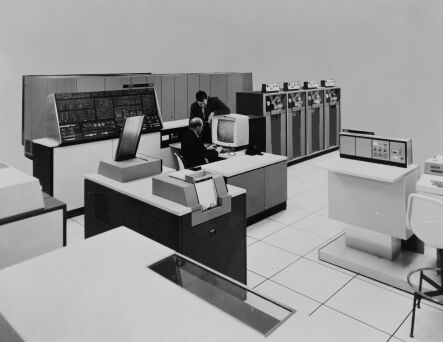

The dominant manufacturers in the high speed computer area in the late 1960s were IBM and CDC. IBM shipped the first 360/91 around 1967 and CDC came out with the CDC 6600. The IBM machine used many of the features developed in the IBM 7030 (STRETCH) which was the main competition to the Ferranti Atlas in the early 1960s. STRETCH was IBM's first large-scale pipelined architecture with interleaved memory and ECL circuit technology. The STRETCH was not a complete success. It guessed which path would be taken from a branch instruction and obeyed instructions along that path. If it had taken the wrong branch, it had to undo the effects of those instructions executed which really compromised its overall performance. Much time was spent at Aldermaston writing compilers that would allow the STRETCH to guess correctly more often.
The 360/91 was IBM's answer to the CDC 6600 and its main development was started in 1963. It used 750 nanosecond memory that was retained in the 360/195. It was a deeply pipelined system with no cache. the pipeline had 20 stages that meant that number of instructions could be in execution at the same time as long as the pipeline was kept full. Interleaved memory helped to achieve this as did a speculative execution a la the STRETCH. About 20 360/91s were made. A newer model 360/95 with faster memory was developed but only two made. Then came the 360/195.
The 360/195 was announced on August 20, 1969. First deliveries were made in 1971 and the machine was withdrawn from selling on February 9, 1977. About 20 360/195s were made and most were used in the government sector for scientific processing.
At the time it was the most powerful computer in IBM's product line and competed with with CDC 7600 as the fastest machine in the world. The introduction of a high speed buffer store and the abandonment of pre-execution was probably the main reason for its greatly improved performance over the 360/91. The machines were built at IBM's Poughkeepsie plant.
The 360/195 was about twice as fast as the 360/85 in circuit speed but the architectural enhancements made it closer to 3 times the 360/85.
Initially it ran under the MVT (Multiprogramming with a Variable number of Tasks) Operating System and ran most 360 programs from other machines in the range without change. The same applied to the peripherals so that nearly everything attached to the 360/75 was moved to the 360/195 when it arrived.
